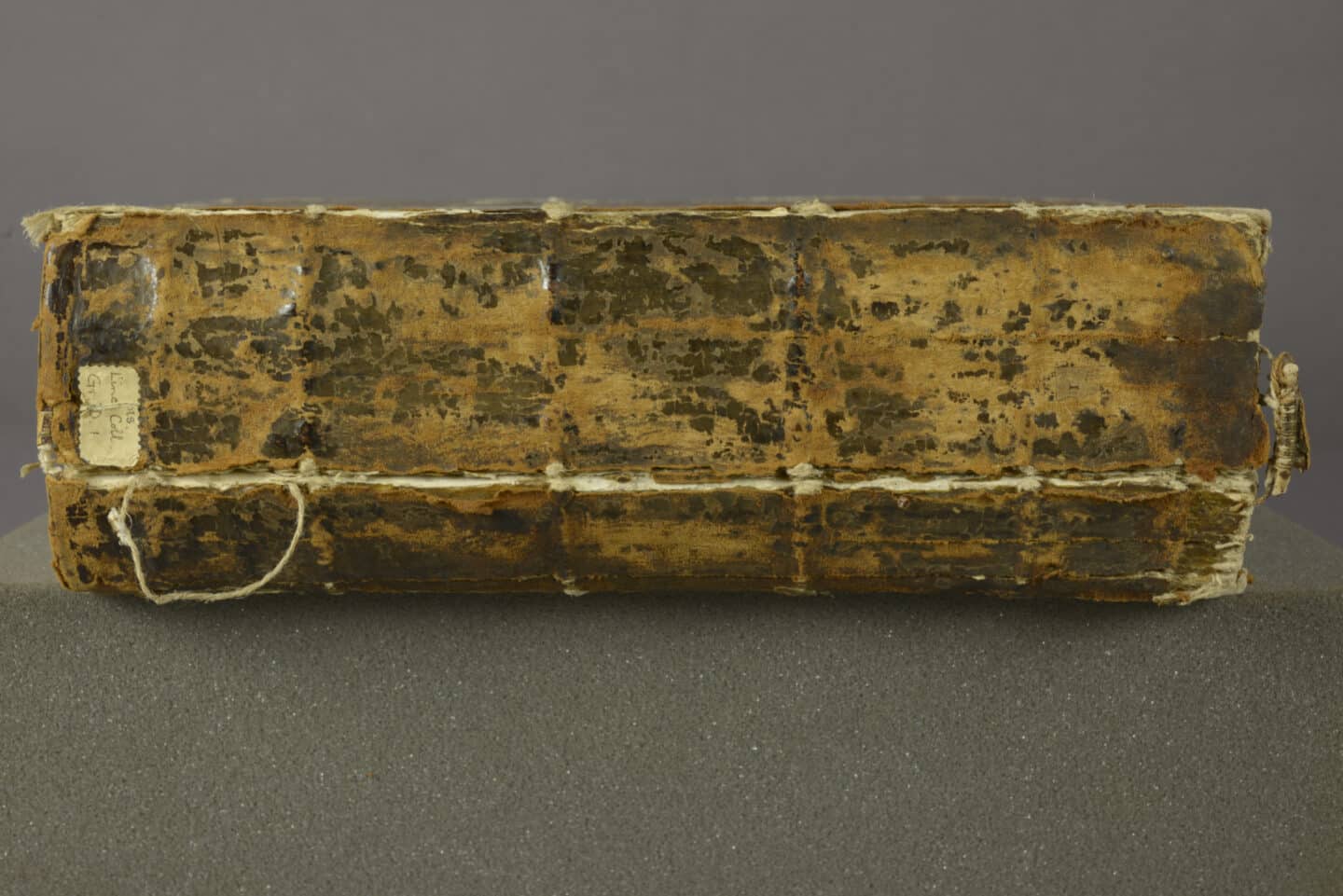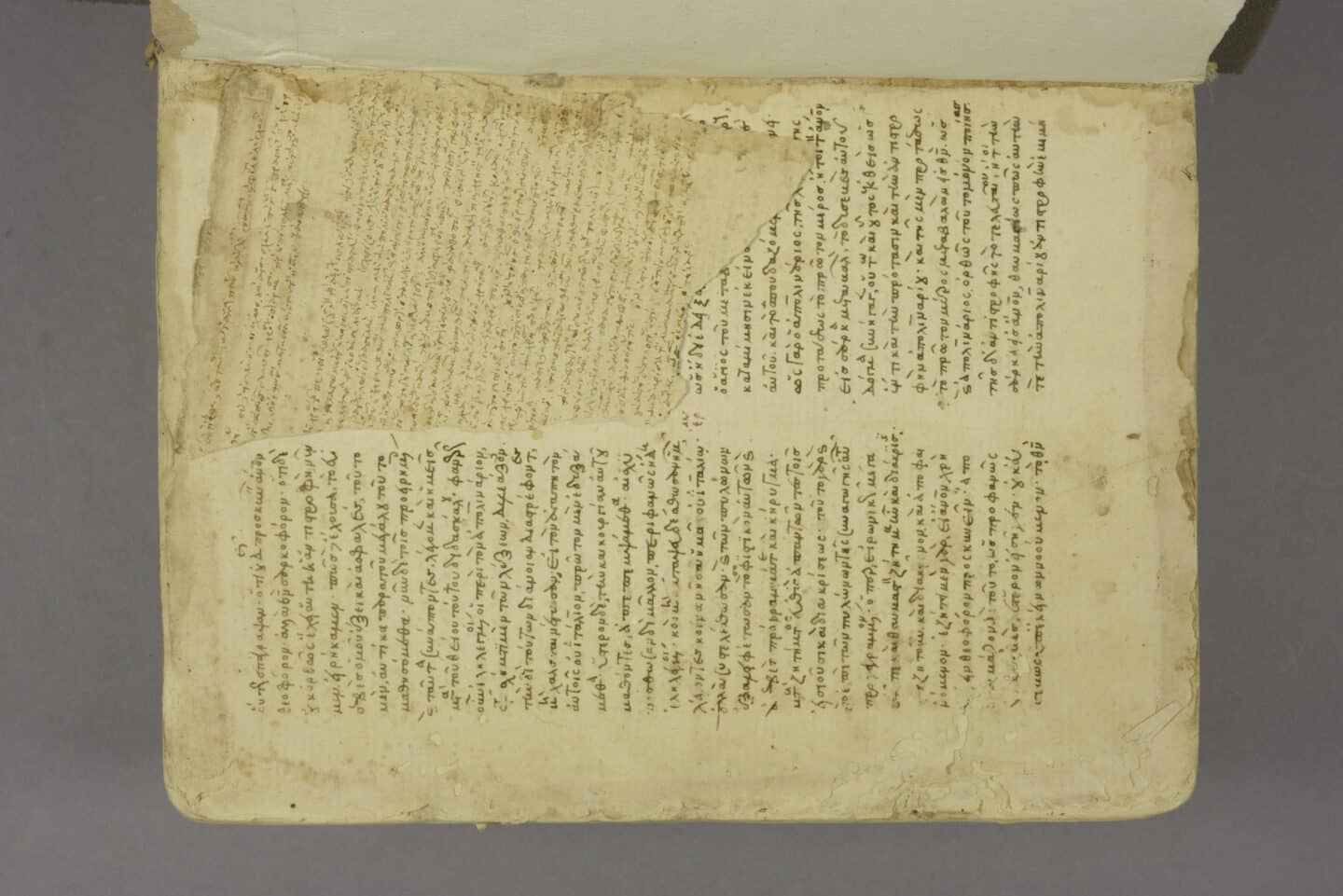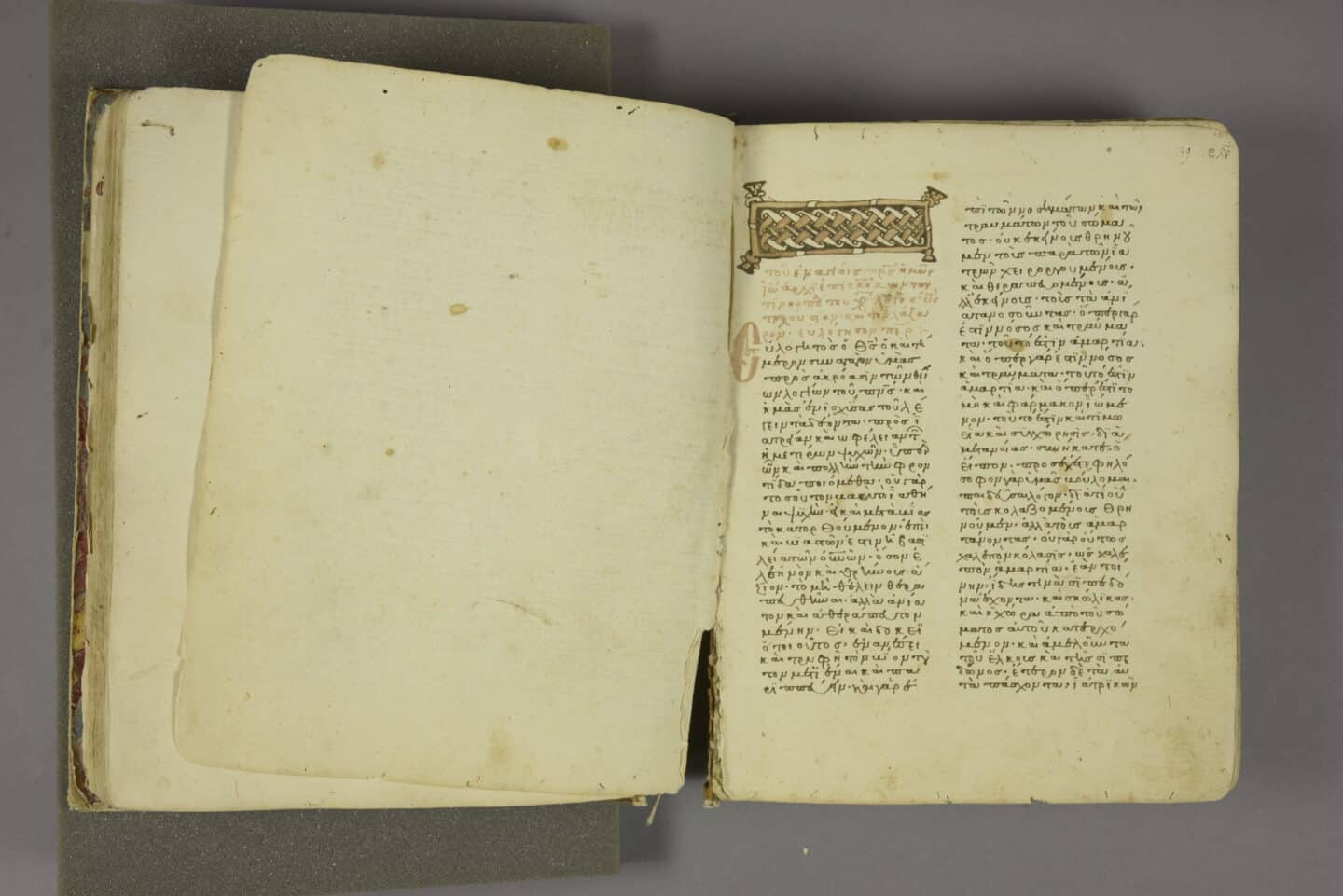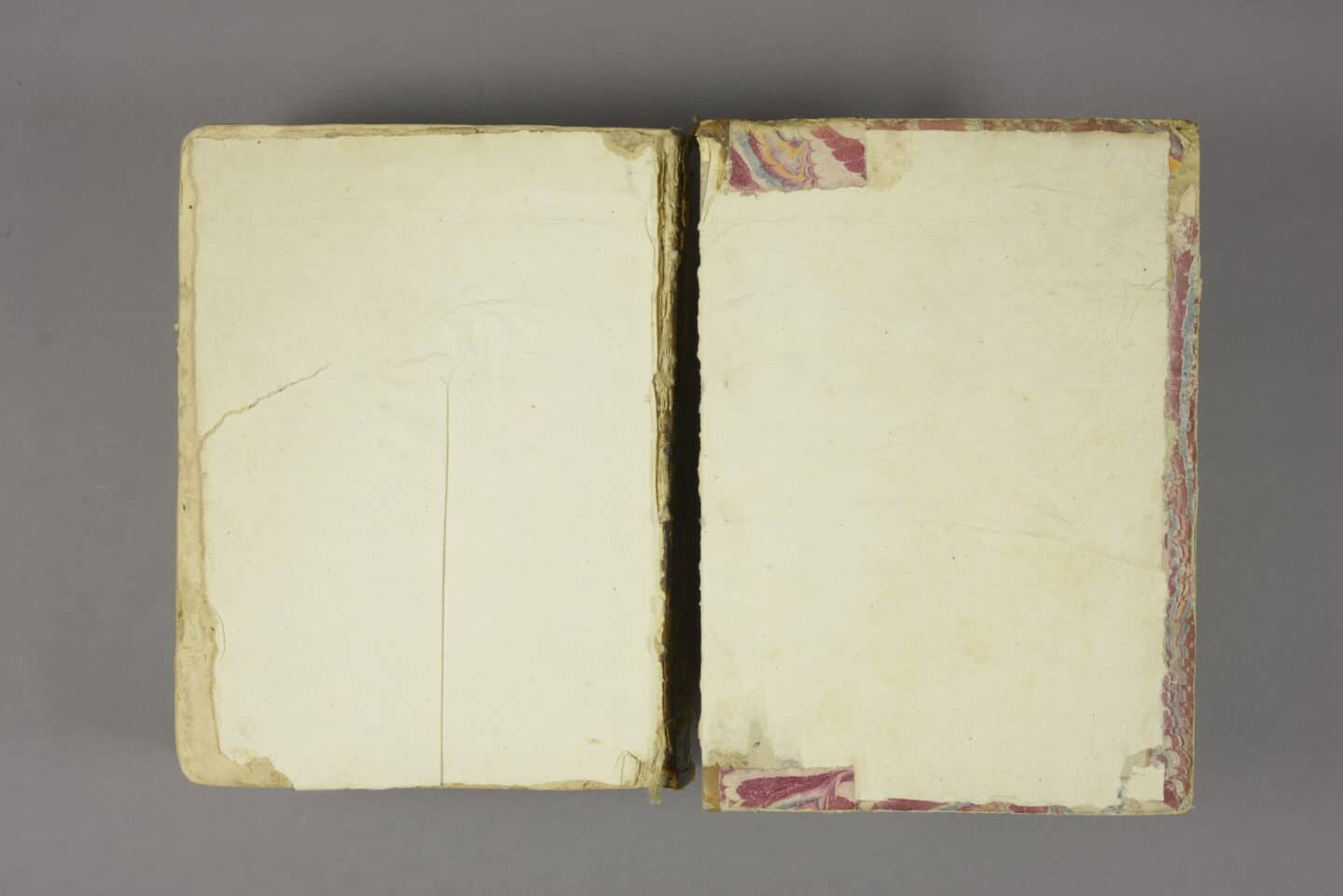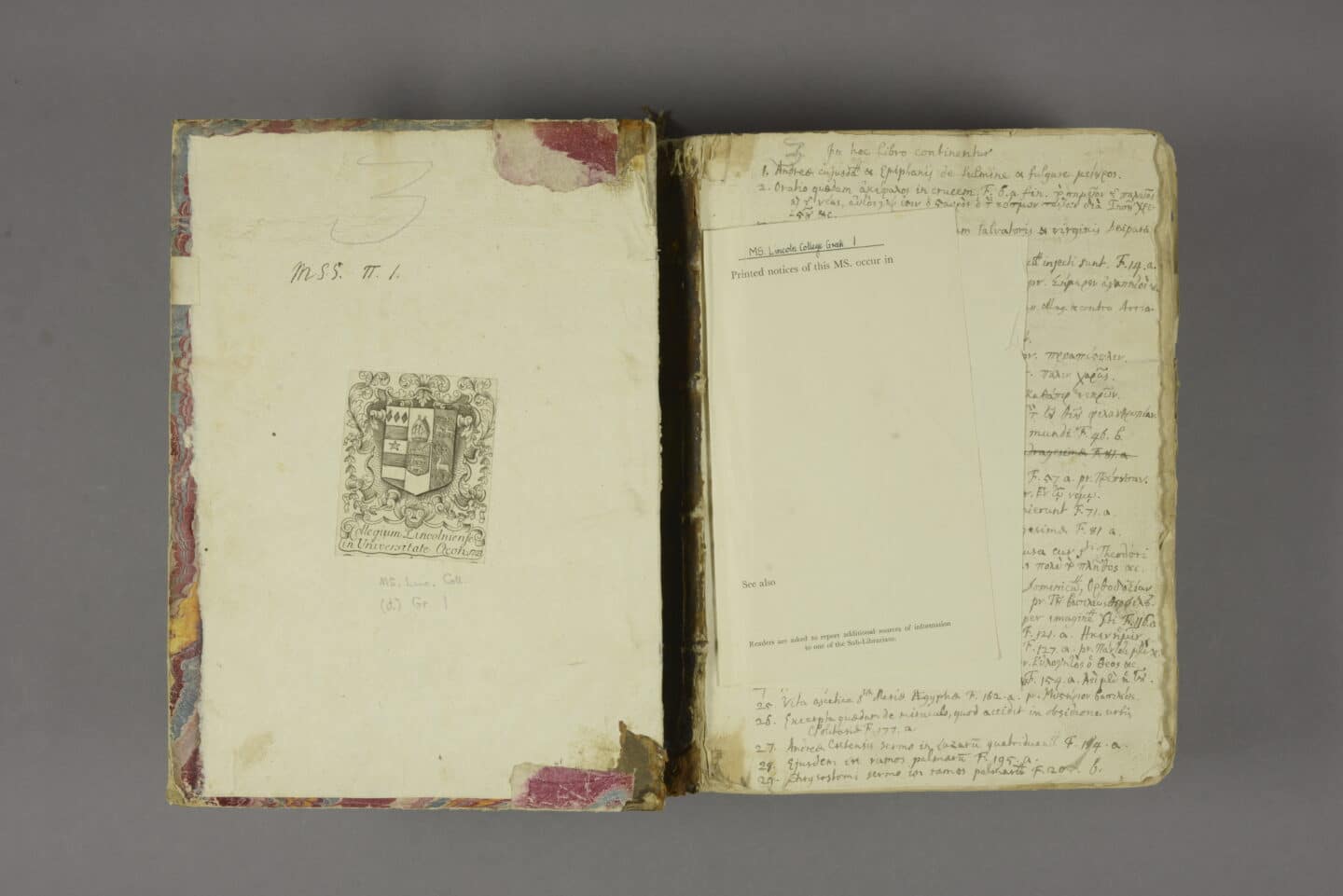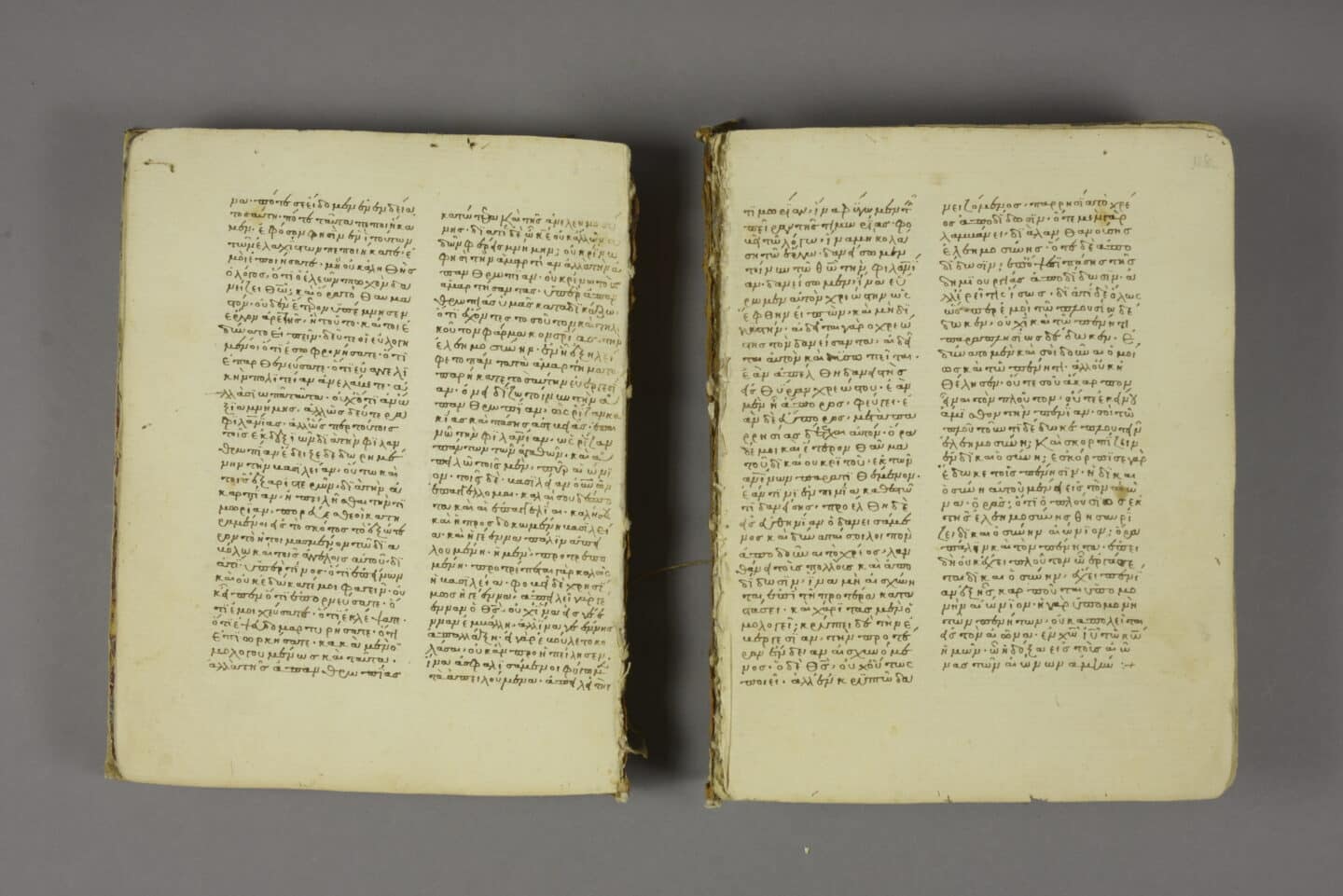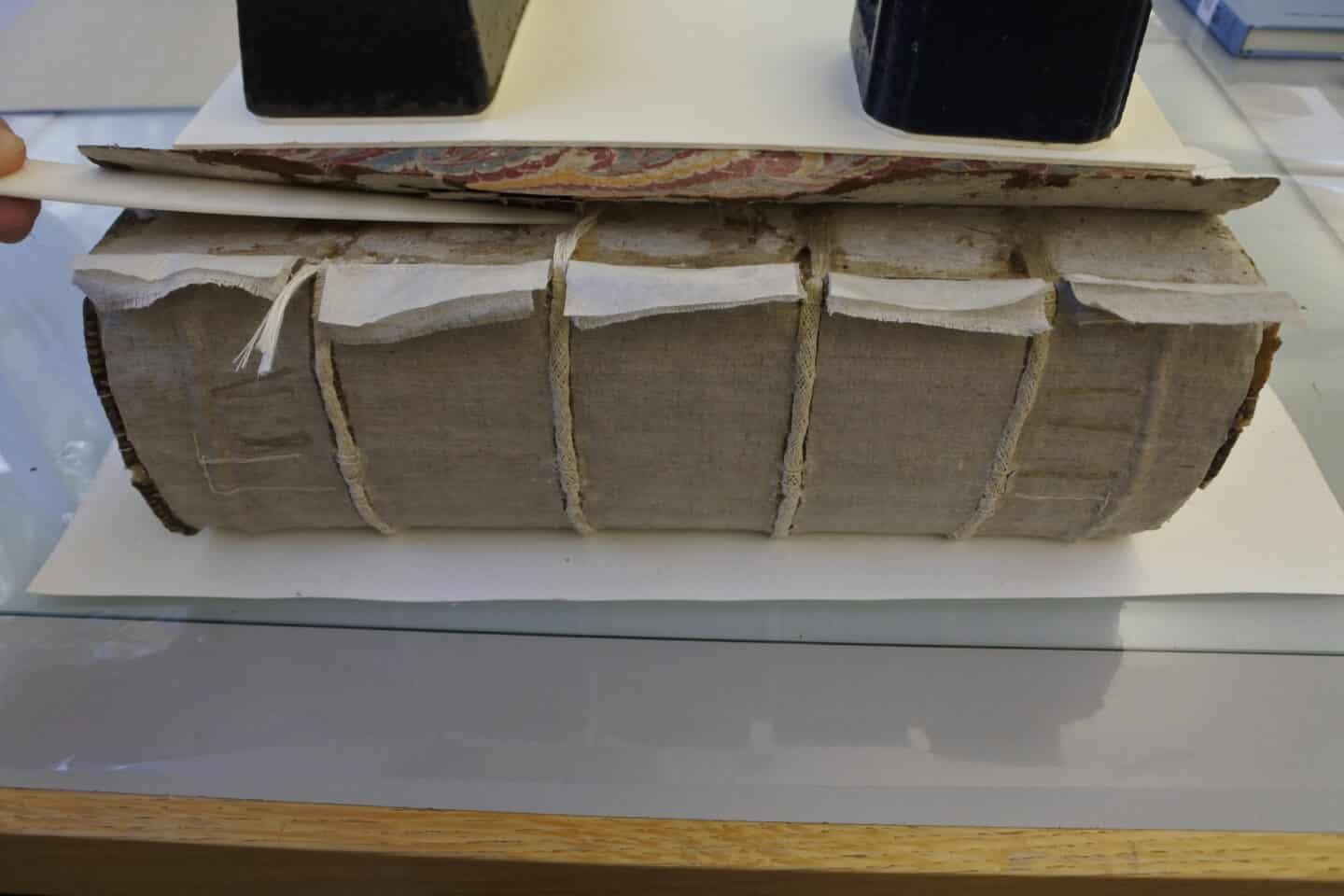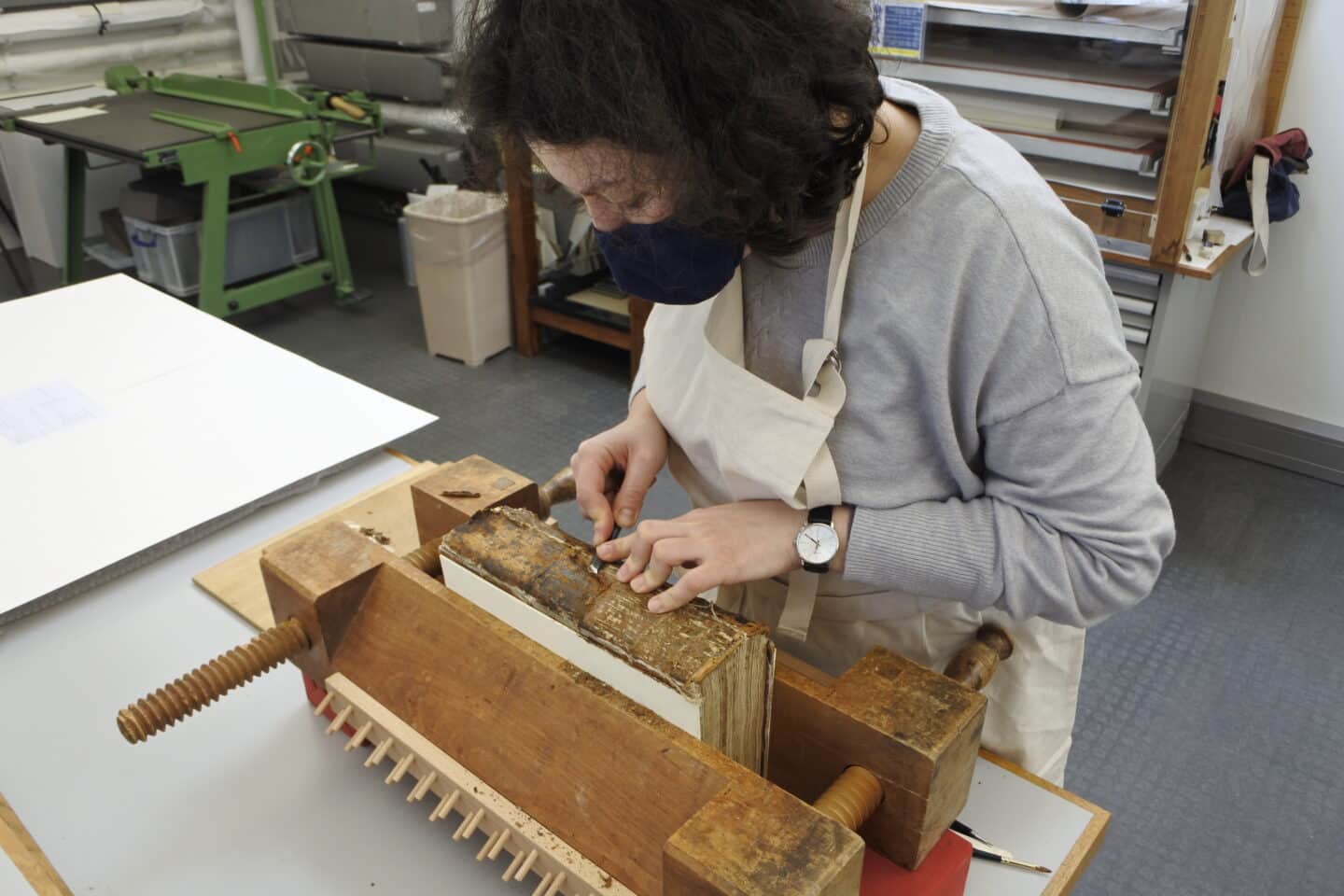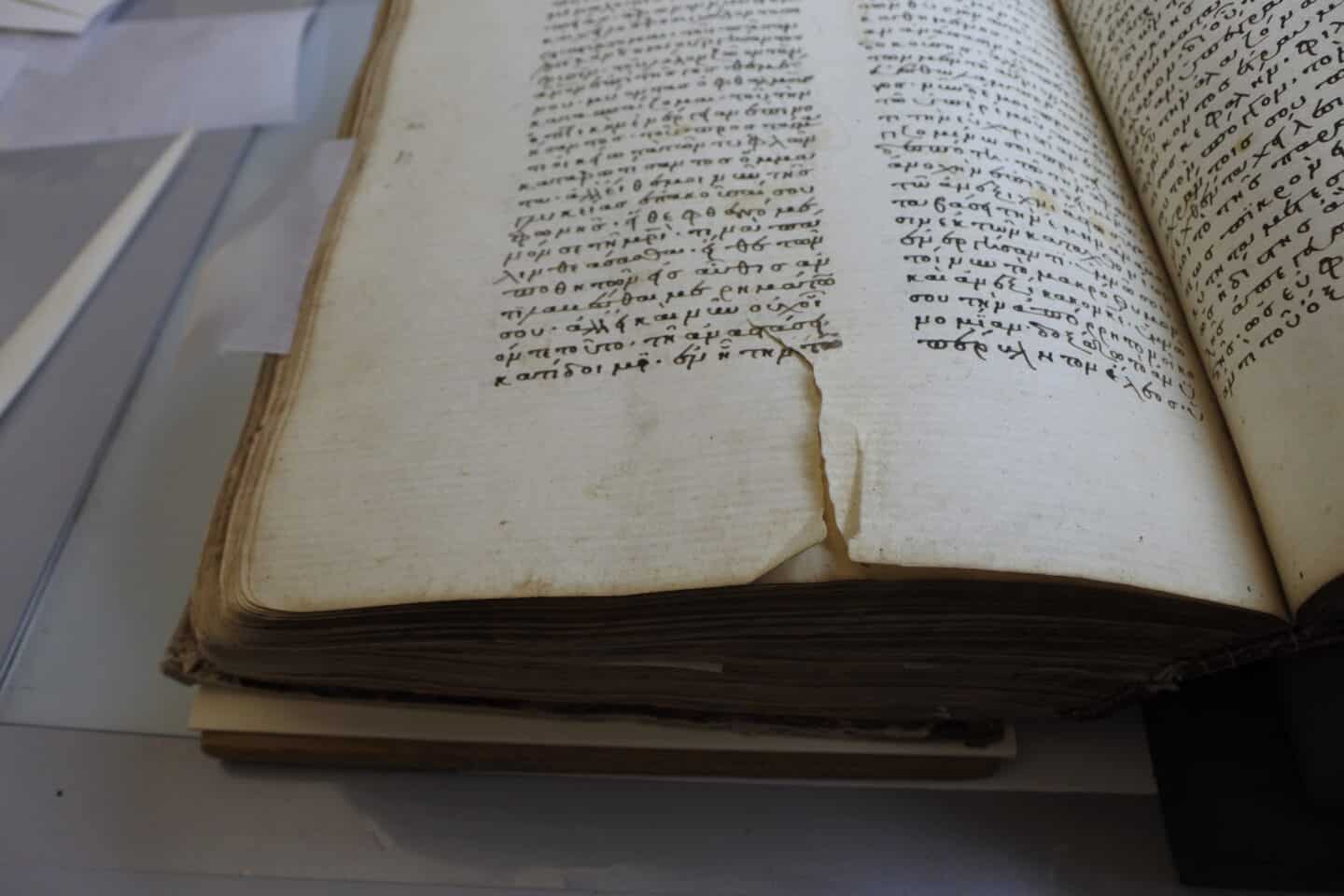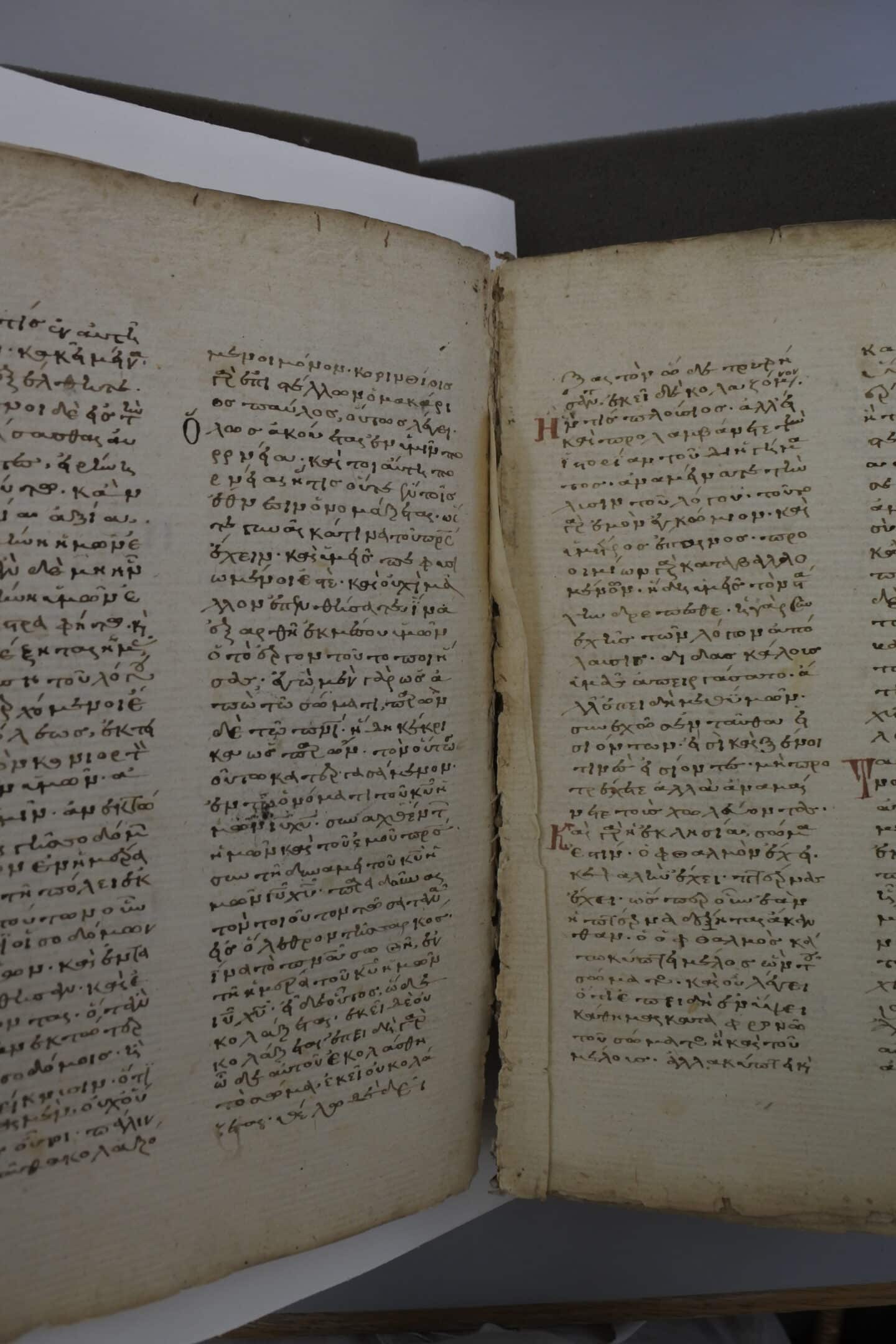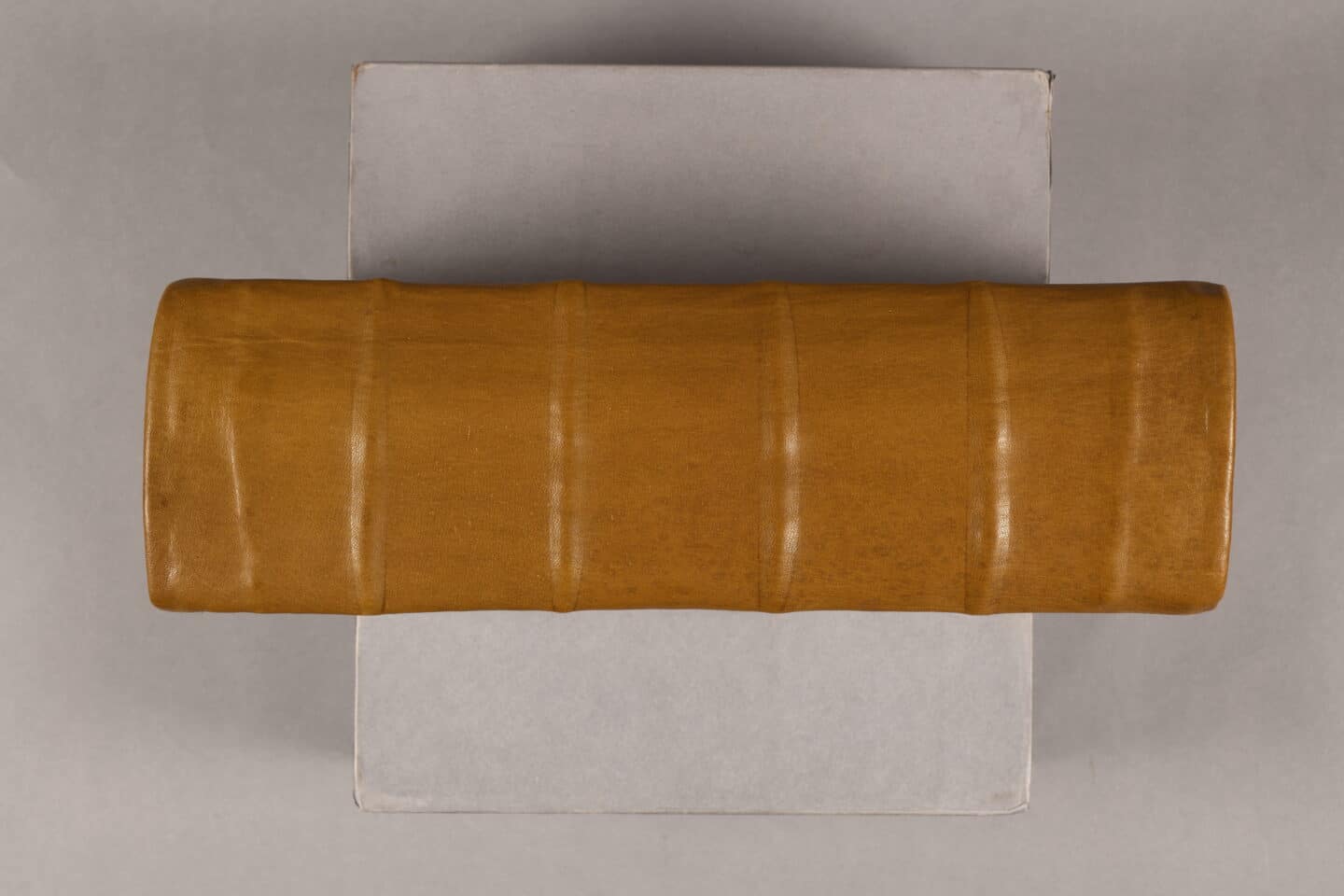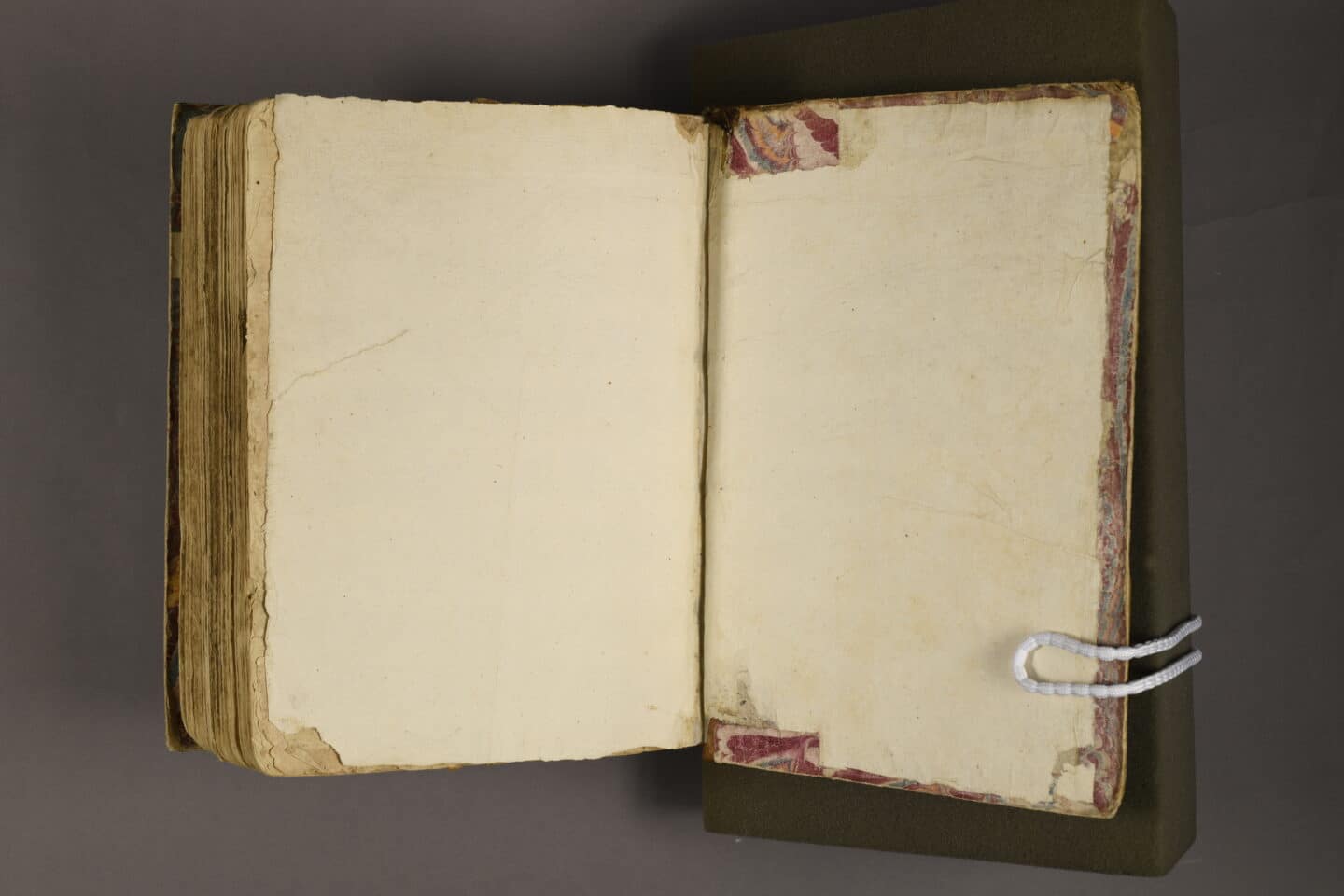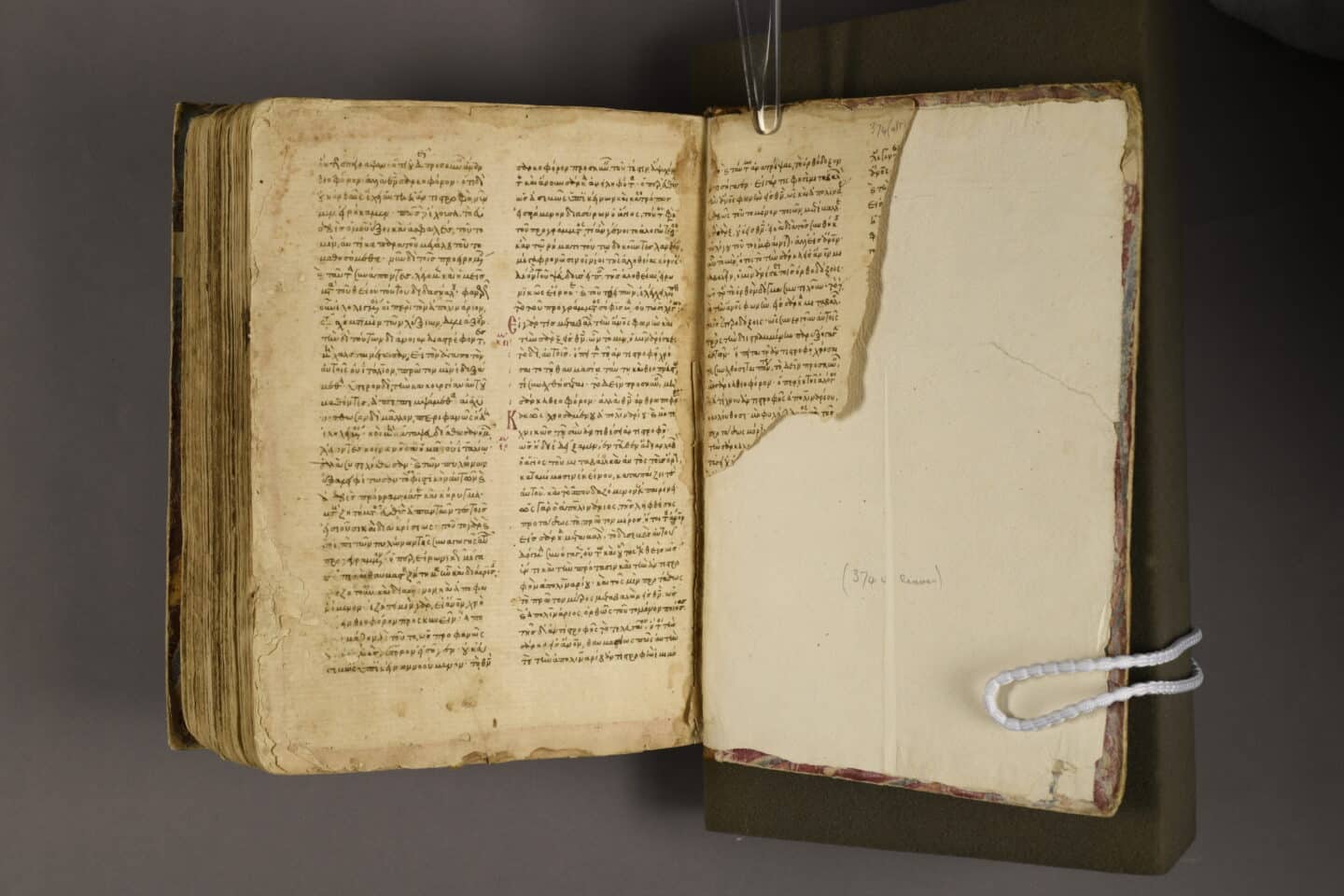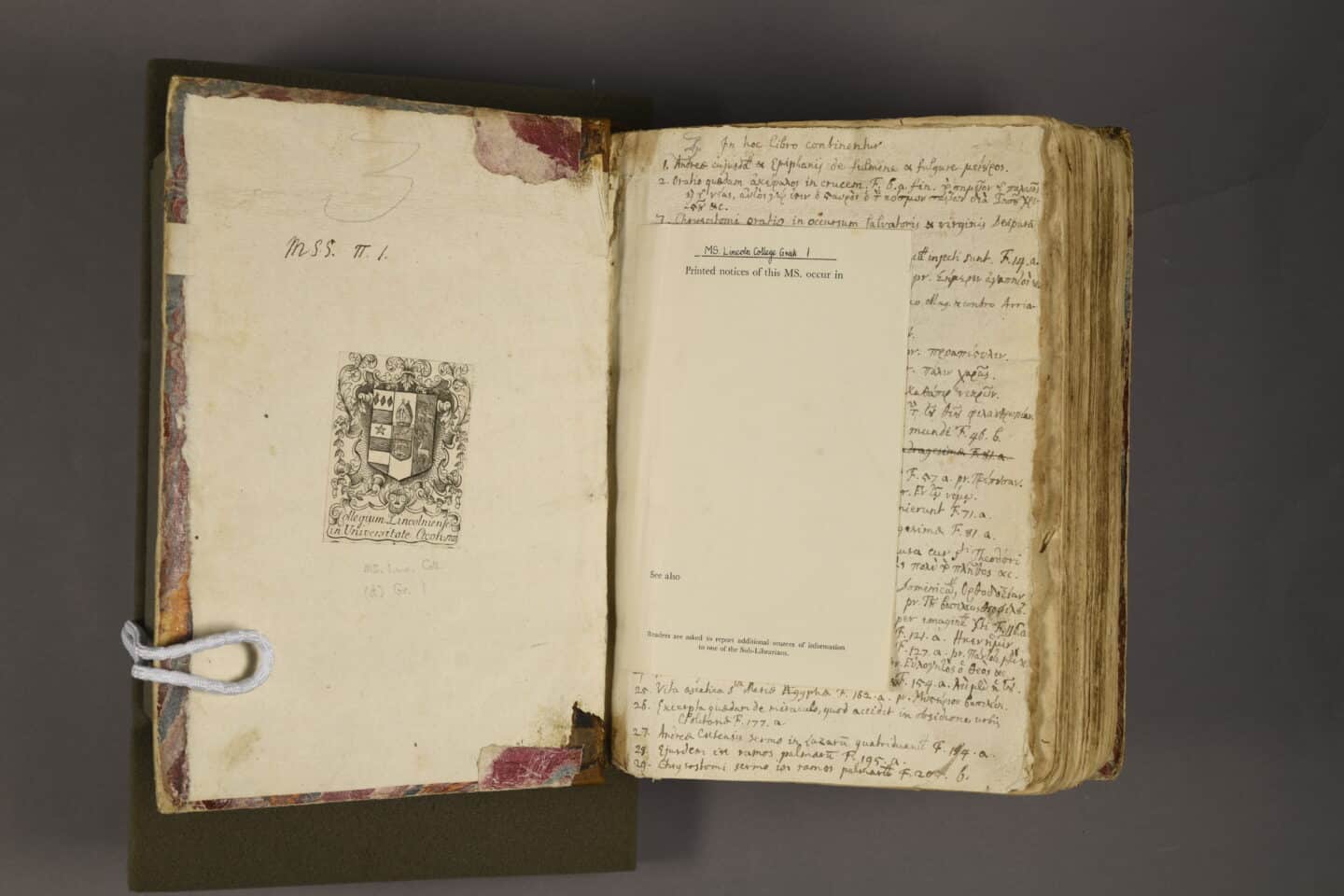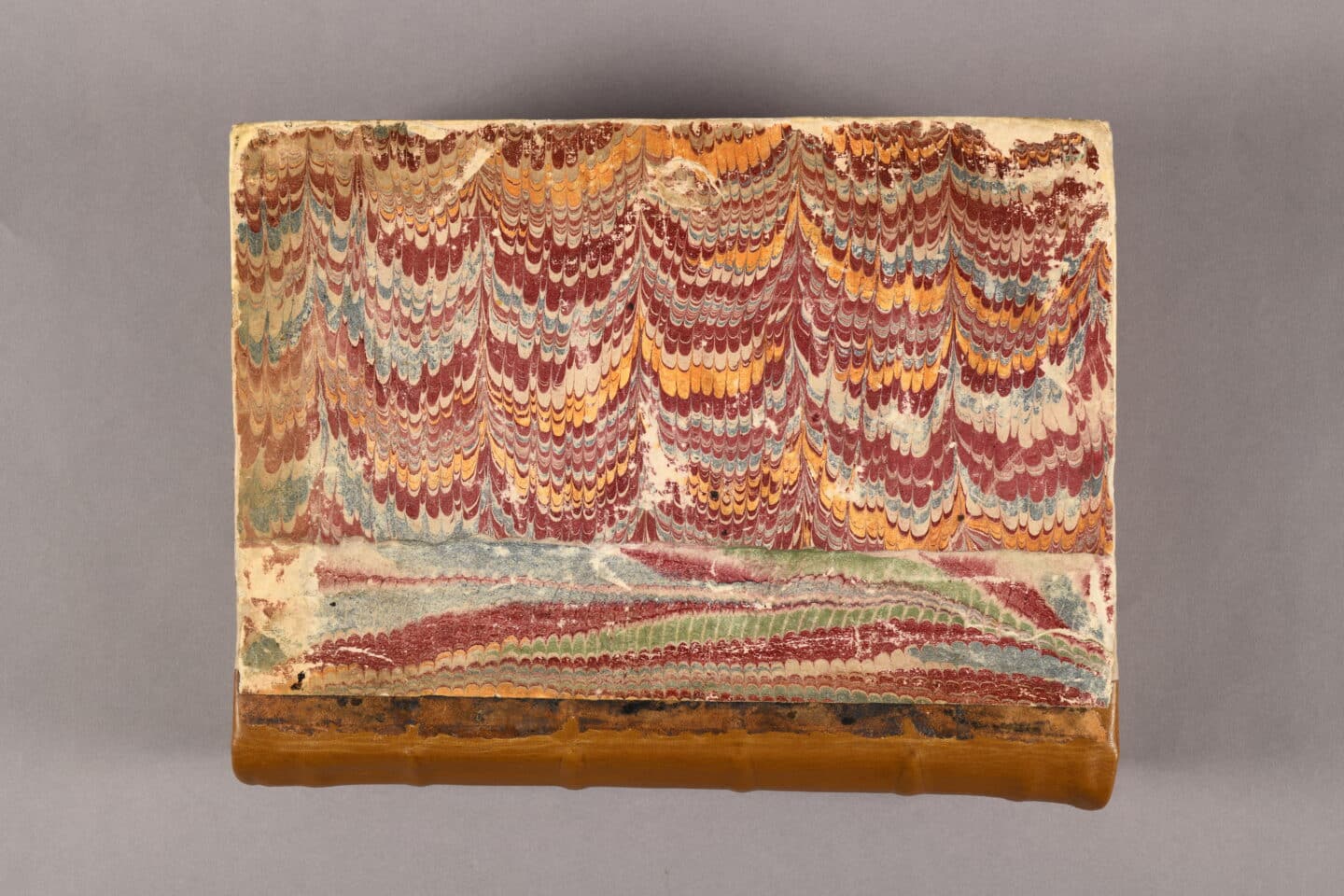Andrew Salus et Epiphanus – Narratio de fulmine et fulgure. Also 38 other works
Greece, 14th century. George Wheler donation.
Before treatment
Treatment
The old leather cover at spine was lifted with a lifting knife as much as possible. This procedure was hindered by the thick layer of crystallised glue and the thin layer of a very worn and deteriorated animal skin. Once the leather was lifted, several applications of wheat starch poultice were applied to swell and soften the glue layer, which was then removed with spatula.
Textblock paper support treatment
- F.29 was repaired all around the edges, where the paper was breaking, with toned Japanese paper; Hasegawa Japanese paper was used along the spine margin to repair and expand this edge so as to create a guard which was then attached to the spine.
- Long tear (more like a paper break) on f.46, had opened and would not come together along the length of the tear; consequently, it was bridged with small tabs of Hasegawa Japanese paper, which were used on both sides of the tear to better secure the repair.
- Other long tears were repaired with Hasegawa, these were ff. 145, 147, 243, 249-251.
- Tears at ff. 107, 161, 160 were repaired with Japanese Kozo paper.
- ff.373-374 were repaired with toned Hasegawa, Kozo and Tengu papers.
- Some parts of the text-block paper support were resized, mainly at foredge margins and corners. In particular these were ff.1-31, 103-137, 313-322, 328-333 and ff 369373. Tail margin areas where the paper support was very thin due to historical water damage with small breaks and small losses were supported with Japanese paper. These were ff.288-299.
- Insect damaged areas were stabilised where there was risk of the paper support tangling and breaking off; these were at ff.103-121 and the repair was done with paper tabs of Japanese Kozo paper.
Section ff.141-147
Following a meeting with Lincoln College Librarian and Professor Nigel Wilson it was decided to keep the group of these trimmed sheets in two parts creating paper hooks (2) along the spine margin of each part on the side where this would be possible. In this way it was possible to secure this section to the textblock by sewing through the paper hooks and fixing the thread around linen braids pasted to the sewing supports and reinforcing the board attachment. Larger tears and marginal smaller tears were repaired with toned Japanese Kozo and Hasegawa papers; Small folded areas at margins were left as is as it was judged that the leaves could be securely turned and there was no risk of further paper loss.
Re-joining the two separate parts of textblock
- Before re-attaching the two split parts of the text block it was necessary to re-sew the detached quire ff.141- 147. The two parts were partly joined by pasting a paper and linen spine lining on one of the spine panels. This lining provided support during re-sewing as the textblock is large/heavy and
- would be difficult to manoeuvre otherwise while trying to re-sew the detached quire. Linen braids were adhered and shaped over the sewing supports; these provided support for the sewing of the detached section and by extending to the boards would better secure the board attachment.
- Once section ff.141-147 was re-sewn, two layers of spine lining were applied to the spine panels; a first layer of Japanese Kozo paper and a second layer of Arville aerolinen. Both linings were extended onto the outside of the boards.
- Further sewing was done in the following "bifolia": ff.18-19, ff.33-34, ff.121-122, ff. 131-132 (stitching between tail kettle and support 4), ff.362-363, ff.369-370, ff. 373-374. The endbands were held in place with toned thread passing through the linen spine lining and secured with a double knot on the spine.
- The point along the spine where the textblock was completely broken was further reinforced with the application of small pieces of alum-tawed skin to bridge the gap. A piece of alum-tawed skin was shaped for each panel, pared thinly along its edges to come to smooth level with the spine surface. It was adhered with the hairside to the spine surface. The hairside surface was previously slightly "roughened" to achieve better adhesion.
- The slips of the linen braids were frayed and attached to the outer faces of the boards. Both the paper and linen spine linings were also attached on to the outside of the boards to provide a more secure board attachment.
- The board sheets on both boards were partially lifted along the spine edge with localised humidification and controlled application of heat. The detached fly-leaf at the lower end was repaired along the spine with Japanese papers, and re-attached to the board sheet with the Japanese paper extending over the board, under the lifted area of the board sheet.
- The manuscript was rebacked with a BV repair calf (Hewit's), dyed with Selladerm dyes, fixed with Tinofix.
- For all the parts of treatment requiring adhesion wheat starch paste solution was used.
